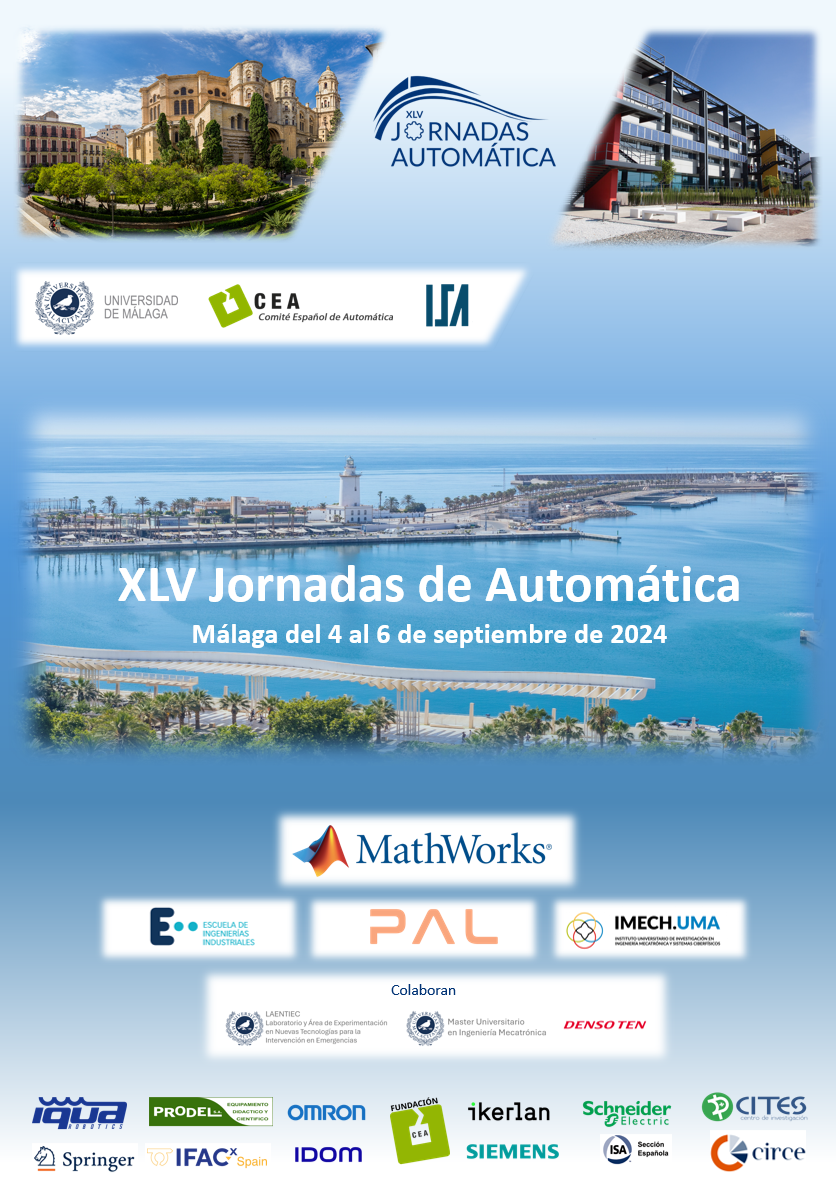Estudio de confort térmico con perspectiva de género
DOI:
https://doi.org/10.17979/ja-cea.2024.45.10891Palabras clave:
Confort térmico, Diseño de Experimentos, Automatización en edificios, Control basado en el conocimiento, Automatización y diseño centrados en el ser humanoResumen
Los índices más utilizados para estimar el confort térmico se basan en fórmulas estandarizadas o recomendaciones empíricas, sin considerar características fisiológicas individuales como género, edad e índice de masa corporal. En este estudio se muestran dos ensayos de temperatura en condiciones invernales en los laboratorios del edificio bioclimático CIESOL, con 6 sujetos (3 hombres y 3 mujeres) en diferentes posiciones en cada ensayo. Se monitorizan las variables climáticas y fisiológicas, y se pasan encuestas de sensación de confort para comparar las percepciones de los ocupantes con índices comúnmente utilizados como el Voto Medio Previsto (PMV). Los resultados muestran cómo difiere la sensación de confort de los ocupantes con el PMV calculado considerando las variables climáticas. También se observan diferencias entre hombres y mujeres, destacando la necesidad de nuevos índices que consideren las características humanas. Estos resultados sirven de base para obtener un modelo de confort térmico teniendo en cuenta la perspectiva de género.
Referencias
ASHRAE. (2009). ASHRAE Handbook - Fundamentals. Refrigerating American Society of Heating and Air-Conditioning Engineers.
ASHRAE. (2023). Ansi/ashrae standard 55-2023 - thermal environmental conditions for human occupancy. Standard.
Castilla, M. d. M., Alvarez, J., Rodriguez, F., Berenguel, M. (2014). Comfort Control in Buildings. DOI: 10.1007/978-1-4471-6347-3
Cdb, P. (2022). Global status report for buildings and construction.
Chaudhuri, T., Soh, Y. C., Li, H., Xie, L. (2017). Machine learning based prediction of thermal comfort in buildings of equatorial Singapore. In: 2017 IEEE International Conference on Smart Grid and Smart Cities (ICSGSC), pp. 72–77. DOI: 10.1109/ICSGSC.2017.8038552
Chaudhuri, T., Soh, Y. C., Li, H., Xie, L. (2020). Machine learning driven personal comfort prediction by wearable sensing of pulse rate and skin temperature. Building and Environment, 170, 106615. DOI: 10.1016/j.buildenv.2019.106615
Chaudhuri, T., Zhai, D., Soh, Y. C., Li, H., Xie, L. (2018). Random forest based thermal comfort prediction from gender-specific physiological parameters using wearable sensing technology. Energy and Buildings, 166, 391–406. DOI: 10.1016/j.enbuild.2018.02.035
Delzendeh, E., Wu, S., Lee, A., Zhou, Y. (2017). The impact of occupants’ behaviours on building energy analysis: A research review. Renewable and Sustainable Energy Reviews, 80, 1061–1071. DOI: 10.1016/j.rser.2017.05.264
Fanger, P. O. (1973). Assessment of man’s thermal comfort in practice. Occupational and Environmental Medicine, 30(4), 313–324. DOI: 10.1136/oem.30.4.313
Goh, T., Ang, B., Xu, X. (2018). Quantifying drivers of CO2 emissions from electricity generation – current practices and future extensions. Applied Energy, 231, 1191–1204. DOI: 10.1016/j.apenergy.2018.09.174
ISO7730. (2023). Moderate thermal environments. determination of the PMV and PPD indices and specification of the conditions for thermal comfort.
Pigliautile, I., Casaccia, S., Morresi, N., Arnesano, M., Pisello, A. L., Revel, G. M. (2020). Assessing occupants’ personal attributes in relation to human perception of environmental comfort: Measurement procedure and data analysis. Building and Environment, 177, 106901. DOI: 10.1016/j.buildenv.2020.106901
Descargas
Publicado
Número
Sección
Licencia
Derechos de autor 2024 Marta Leal Rueda, Verónica Abad Alcaraz, María del Mar Castilla Nieto, José Domingo Álvarez Hervás

Esta obra está bajo una licencia internacional Creative Commons Atribución-NoComercial-CompartirIgual 4.0.





